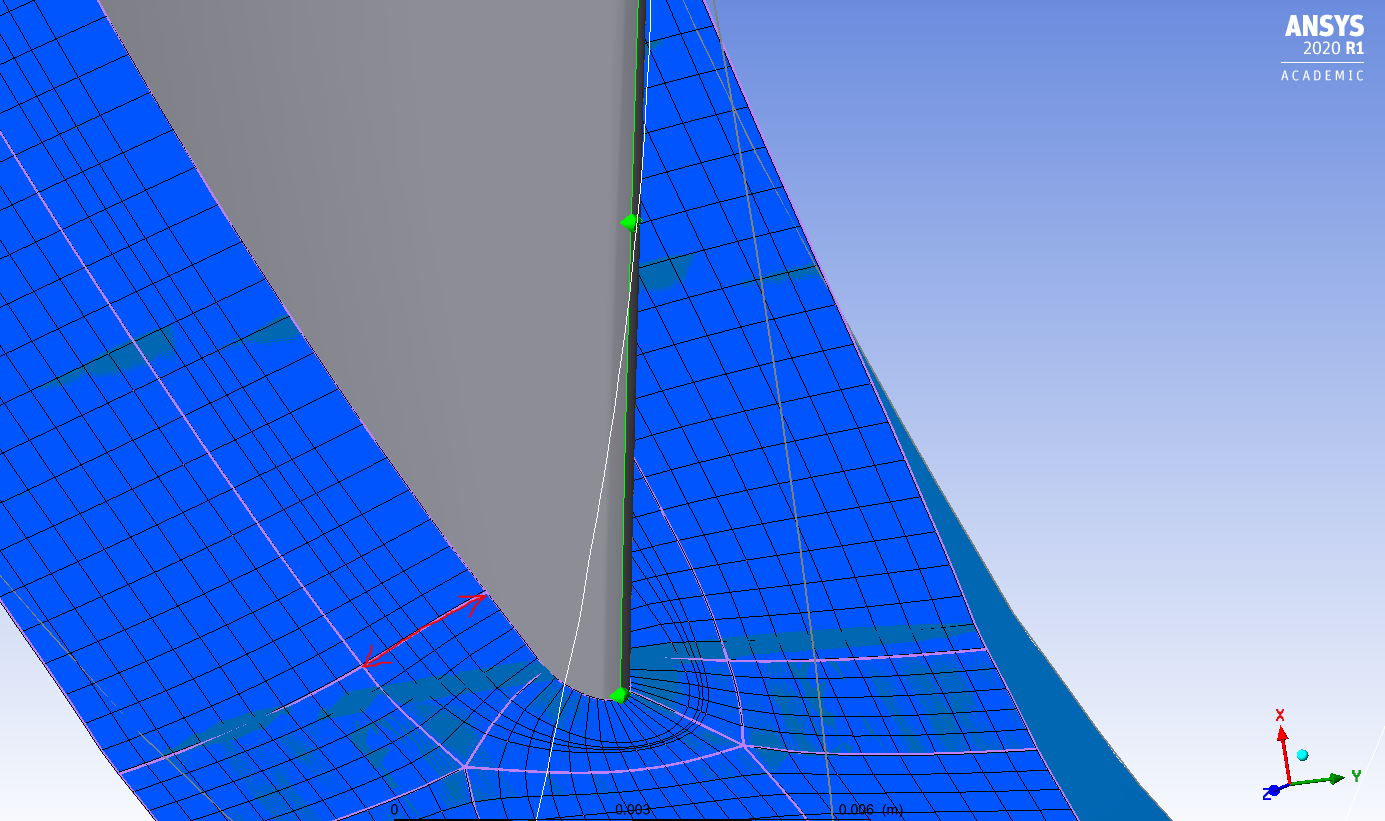TAGGED: cfx, turbogrid, turbomachinery
-
-
October 22, 2021 at 6:02 pm
JoaoAlex
SubscriberI'm performing a mesh study for a turbomachinery case, and I was wondering which mesh types are Turbogrid capable of generating, like a prism, tetra, quadrilateral, hex ...
October 28, 2021 at 12:27 amrfblumen
Ansys EmployeeFor the main flow passage, TurboGrid creates quadrilateral elements on 2D surfaces of revolution at different span fractions using a mesh topology based on the type of blading. These layers are used to interpolate the mesh in the span-wise direction, creating 3D hexahedral elements.
For secondary flow passages, TurboGrid creates a 2D mesh composed of quadrilateral elements (inflation layers) and tetrahedral elements (outside the inflation region). These elements are extruded in the circumferential direction to generate 3D hexahedral and prismatic elements.
November 9, 2021 at 5:46 pmJoaoAlex
Subscriber,can you please answer a few more questions related to the mesh features in Turbogrid?
Turbogrid creates various types of mesh blocks, right? O, H, C, can I check which one is been used?
For the K-e turbulence model, should the y+ value be greater than 11,06 (read in the CFX Manuals) or greater than 30? I'm running a geometrical optimization, so I cant go for the SST turbulence model as it takes way more time to complete a single CFD case.
Can I specifically change the number of boundary layer mesh points? The turbomachinery that I'm trying to simulate has 5 elements in the boundary layer (as shown in the picture below), is there a problem? In the CFX manual, it says that there should be around 10-15 elements in this region.

December 14, 2021 at 8:17 pmJoaoAlex
Subscriber?
Viewing 3 reply threads- The topic ‘Turbogrid generates poly or Tetra mesh?’ is closed to new replies.
Innovation SpaceTrending discussionsTop Contributors-
4623
-
1535
-
1386
-
1215
-
1021
Top Rated Tags© 2025 Copyright ANSYS, Inc. All rights reserved.
Ansys does not support the usage of unauthorized Ansys software. Please visit www.ansys.com to obtain an official distribution.
-











